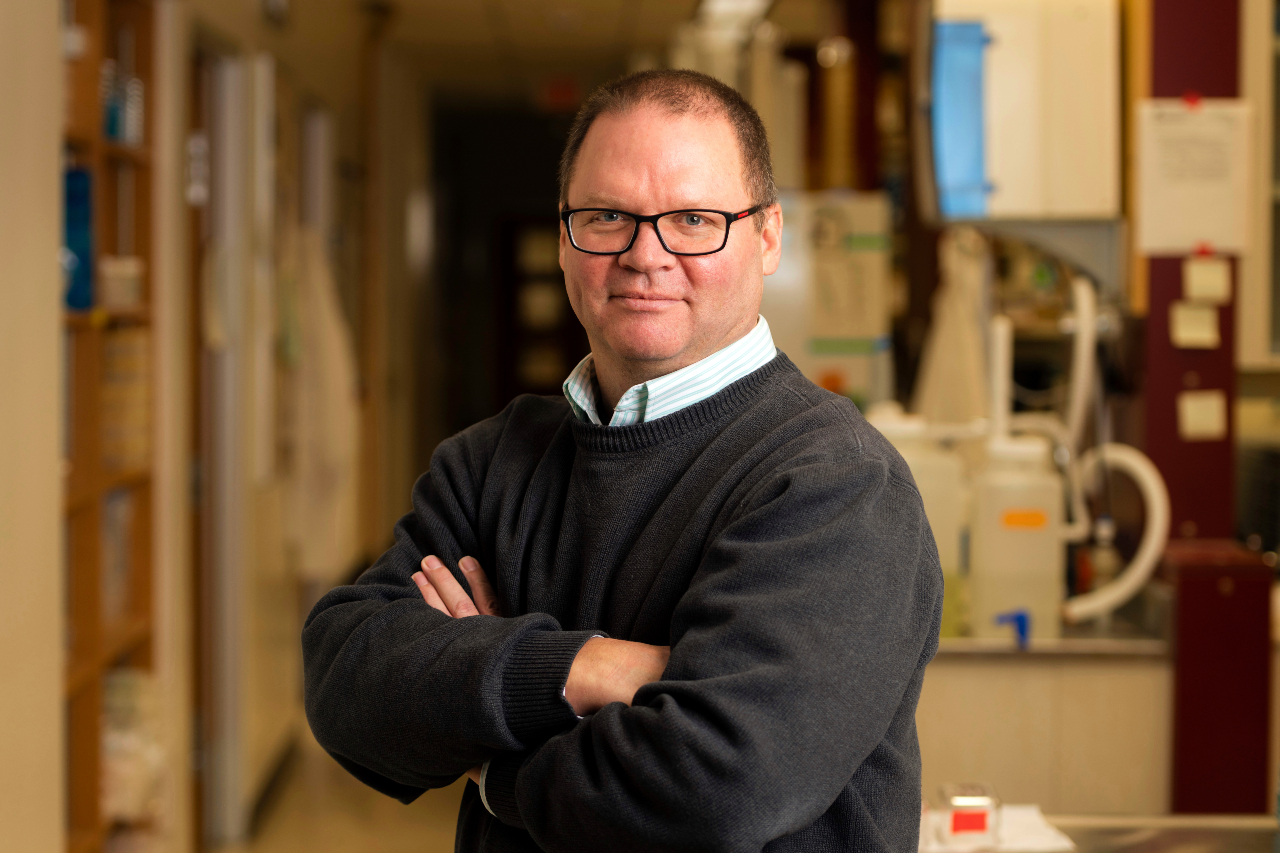Understanding traces of ancient infections could be key to new treatments for human diseases
Jon Pullin - 7 September 2022

Matthias Götte, professor in the Department of Medical Microbiology & Immunology at the University of Alberta. Photo: FoMD.
A new study is the first to show the crystal structure of the Human Endogenous Retrovirus K (HERV-K) reverse transcriptase, which could lead to new therapies for cancer and other diseases.
Matthias Götte, professor in the Department of Medical Microbiology & Immunology at the University of Alberta, co-authored the joint study along with research associate Egor Tchesnokov. The study was led by Eric Baldwin, VP Structural Biology and Biophysics at Boston-based biotechnology company ROME Therapeutics.
“A large percentage of the human genome is made up of the relics of ancient viruses that infected our ancestors,” says Götte.
“Humans were infected hundreds of thousands of years ago with viruses that integrated into our DNA, just as known retroviruses like HIV do today. Some of these endogenous viruses are still partially active, using a reverse transcriptase enzyme to produce pieces of DNA, which can drive disease. Stunningly, the three-dimensional structure of the endogenous retrovirus reverse transcriptase enzyme is highly related to the one used by HIV.”
“This new data is important for informing the development of anti-retroviral treatments that can be considered for some of our most serious diseases,” says Götte.
Human endogenous retroviruses are derived from viruses that were transmitted from person to person, like HIV, throughout human evolution. This process leaves a trace in the DNA of the infected host cell. The viral genetic trace can then be transmitted to future generations. These ancient retroviruses make up eight per cent of our current DNA.
The expression of these retroviruses in human cells has been associated with a variety of diseases, including cancer as well as autoimmune and neurodegenerative diseases. Because some copies of these retroviruses encode proteins with reverse transcriptase activity, scientists have studied the use of inhibitors of HIV reverse transcriptase to block the endogenous retroviruses associated with these conditions.
Equipped with biochemical assays and the new structure of the endogenous retrovirus reverse transcriptase, the group now has the tools to inform development of more specific potential therapies.
The study was a joint effort between researchers at ROME, the University of Alberta, Rutgers University, Proteros Biostructures GmbH and Charles River Laboratory.
“This collaborative effort is an excellent example of how innovation can be driven by public-private partnerships,” says Götte.